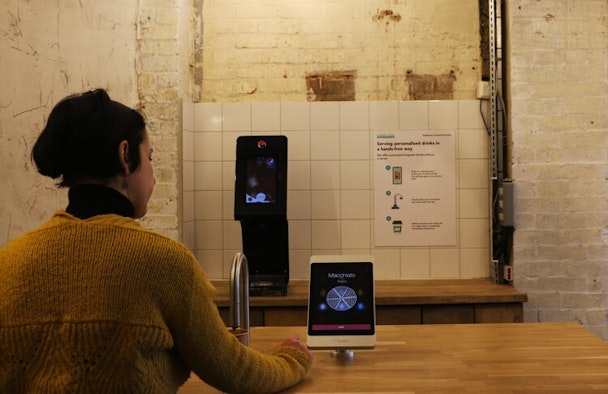Five ways to mix virtual and physical installations
After a year of life under the pandemic, it’s little wonder that consumers are increasingly seeking new experiences and opportunities to interact with brands, which explains the re-emergence of experiential marketing as a trend in advertising.

Five things to look out for when combining virtual installations in a physical space
Combining virtual and physical installations in spaces is a strong way to entice customers back to stores and retail spaces, many of whom have enjoyed the return to shopping in-person after a year of consuming online.
With this return, we’ve highlighted some key steps to consider when activating virtual installations in a physical space to ensure maximum consumer engagement.
1. Think about the usefulness of the technology used
It’s important to consider how the technology installed in a space will benefit the customer who will interact with it. Marketers looking to utilize virtual installations in a physical space, particularly retail, should consider how and why it will benefit the consumer’s experience. Technology can be used in various ways and can help to improve and even make a consumer’s visit more efficient.
At The Drum’s soon-to-launch Labs building, its pioneering tech space known as CornerShop showcases a number of tech initiatives that are pushing retail forward. Installations such as the personalized hot beverage counter – which syncs with the consumer’s phone and preferences to create their preferred drink of choice on demand – and the virtual try-on space, which allows shoppers to try items on virtually without ever having to step into a changing room, have kept the consumer in mind to resolve annoying and often time-consuming aspects of shopping. That way they have remained purposeful and relevant to the consumer’s needs.
2. Technology for technology’s sake
Given the above advice, marketers can adopt engaging and interactive tech that may lure customers in through curiosity alone. But these installations shouldn’t be the main draw of the physical space; they should be there for test driving purposes only as a way to gain feedback and understand its experimental value. For marketers looking to implement this sort of tech in-store, make sure to include clear instructions on how the tech works and use clear signposting for consumers to know how to interact with it appropriately. These pieces will serve more as showcase items, but they will give a good sense on customer appetite and willingness to try out new innovations.
3. Clever curation
Marketers should always consider a customer’s journey – particularly in a physical space – but when combining digital installations into that experience, this should be paramount. Think about how consumers will navigate the store, including how reliant on technology they will be, whether they will need to use their phone at all or from the get-go, what the sign-posting around that should be and whether they will need space between tech installations.
4. Don’t be creepy…
Just because marketers can use new tech innovations, it doesn’t mean that they always need to or should – or even that it should be the only option available in-store. Obviously most digital installations that track some sort of customer engagement will require some customer information to be entered into the system, however some consumers may prefer not to share their details.
Allow consumers to opt in and voluntarily share information – and which information they want to – if they so choose. At The Drum’s Labs space, customers can navigate the store and its installations by logging onto the affiliated app, where they can then decide what they want to engage with. Logging in through the app will allow them to control the music they’re engaging with or present personalized displays on the shop’s shelves that relate to their expressed interests and are reflective of their shopping preferences.
5. Learn
Obviously virtual installations are entering a new era themselves, and after a year of the pandemic all marketers are re-entering the game and having to go through a period of trial and error to figure out what works. There’s no guaranteed route for successful and engaging experiential, so it’s down to marketers to use the data they receive to review and refine their virtual installations and spaces as they see fit.
Marketers need to work with the consumer rather than against them and be prepared to constantly keep evolving to keep up with changing customer demands.
